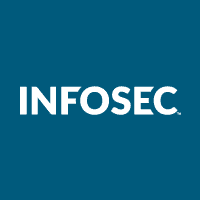CCNA certification prep: IP Connectivity
Introduction: The CCNA exam
What percentage of the CCNA exam focuses on IP connectivity? The IP connectivity section of the CCNA exam is just one of the six exam topics. The exam blueprint shows that the IP connectivity section is the largest one, covering 25% of the exam. The section introduces some of the basic notions of routing, which require in-depth explanations.
What topics are covered in this section of the exam? At the very highest level, the topics covered in this section are related to explaining the concept of a route table and how to read its content, how a router makes forwarding decisions, the concept of static routes and how to configure them, the concept of Open Shortest Path First (OSPF) protocol and how to configure some of the basic features, and lastly, explaining the first hop redundancy protocols.

Earn your CCNA, guaranteed!
High-level overview of IP connectivity topics
The upcoming paragraphs of this guide will go a little deeper on what one is expected to know for the IP connectivity section.
Routing table components
Considering how the routing is performed by the routers, it’s critical to understand what a routing table is, what its components are and how to read a routing table. The below information will appear in a routing table output.
You will need to know what the following items are:
- Routing protocol code: An identification of the source of information that installed that particular prefix in the routing table. At the CCNA level, you should be familiar with the codes for connected routes, static routes, local routes and OSPF routes. Each source of information has a default administrative distance value
- Prefix: Also called a subnet. An aggregation of IP addresses
- Network mask: Used to divide an IP address into a part that identifies the host and another part that identifies the subnet to which the host belongs to
- Next hop: The IP address used to route the packets to reach a specific subnet
- Administrative distance: This represents the trustiness of a source of information for a network prefix. The value is between 0 and 255 and the lower the value, the more that source of information is trusted. The administrative distance is used as a tiebreaker in the situation when two sources of information advertise the same network prefix
- Metric: Represents a value that the router is using to select the best path for a network prefix in case there are multiple paths through the same source of information (same routing protocol). The value can be something simple or it can come from an algorithm calculation that involves multiple variables
- Gateway of last resort: A route that is used when there is no other more specific route for a given destination. It is also called the default route
How routers make forwarding decisions
This section will cover how the routers are forwarding the packets. It is important to understand and remember that the forwarding is done based on the destination by default.
The information used by the routers to forward the packets is based solely on what is found in the routing table of the router. To understand how a given prefix ends up in a routing table, it is critical to master the administrative distance and routing protocol metric notions.
After the routes are installed in the routing table, another critical point is to remember that the routing is done following the longest prefix match and that the administrative distance and the metrics are considered only when the prefixes have the same length (same subnet mask). In other words, If the routing table contains 10.10.10.0/24 and 10.10.10.0/29 subnets, each with a different next hop and there is a packet going to 10.10.10.10 destination, then the next hop corresponding to 10.10.10.0/29 subnet will be used to forward the packet. The default route is the shortest prefix match, 0.0.0.0/0, can match anything.
How to configure and verify IPv4 and IPv6 static routing
This section covers the static routes, for both IPv4 and IPv6. The static routes are one of the three types of routes, the other being connected and routing protocol routes.
The static routes are added to the routing table through manual configuration which has advantages and disadvantages. Each static route is configured using “ip route” or “ipv6 route”. It is important to understand the types of static routes:
- Default route: The route that is used when there is no other more specific (longer) route in the routing table, also seen as 0.0.0.0/0
- Network route: A static route that comprise a subnet
- Host route: A static route to a single host address
- Floating route: A static route that appears in the routing table based on whether a route with a better (lower) administrative distance is present or not (the second route can be another static route or a routing protocol route)
As for static routes troubleshooting, when they are not working as expected, it can be one of these problems:
- The static route is not configured
- The static route is configured, but incorrectly
Some tools that will help your troubleshooting are ping and traceroute.
How to configure and verify single area OSPFv2
This is something complex, at least at the CCNA level. First, you will need to understand the type of routing protocols, then to understand the differences between various Interior Gateway Protocols (IGP).
As for OSPF, it is important to understand the OSPF neighborship process and what happens through all the stages until the neighbors end in Full state. Throughout this process, various terms like Router-ID, LSA, LSDB, DR and BDR will come up, and it is critical to understand what they are and how they can influence the process.
Another critical section related to OSPF is to understand how the DR and BDR are elected on a broadcast domain (Ethernet by default is a broadcast domain) and what happens in case of a failure.
Also, although not required in very much detail, it is important to understand the types of OSPF areas and LSAs. There is a relation between a type of an area and the LSAs that are found there. This will set up the foundation for a more advanced OSPF topics section of the CCNP exams.
What is a first-hop redundancy protocol?
First-hop redundancy protocols (FHRP) are a class of protocols (HSRP, GLBP — Cisco-proprietary) and VRRP) that allows multiple routers on the same subnet to act as a single default router for the host in that subnet.
For the purpose of the CCNA exam, it is enough to understand how they are working and that is:
- The default routers share a virtual IP address in the subnet
- The hosts are using the virtual IP address as their default gateway
- The FHRP devices are exchanging messages to agree which device will act as master/active
- In case of a failure, the backup/standby device will take over following the missing of the keepalives from the master/active device
Where should I focus my time studying?
For the CCNA exam, specific for this section, you should master how a router builds the routing table and how the forwarding is done. This sets the ground for future knowledge expansion. While the static routing and routing protocols have their specifics, the respective routes are ending up in the routing table. Not knowing the logic the router uses to forward the traffic will cause gaps which can slow verification and troubleshooting.
Further, about the static routing and OSPF (and routing protocols in general), you should have a clear understanding of what are their benefits and their disadvantages. Although it is a basic level in CCNA, the OSPF topic is pretty complex and will require extensive reading.
Most important is actually to practice using labs to confirm that the routers are behaving based on the understanding that came through the documentation.
Conclusion
The IP connectivity section of the CCNA exam is very important because it is building the foundation for the routing forwarding and operations that will be used for more advanced topics in the subsequent Cisco exams. It’s important to study it carefully.
Sources
- 200-301 CCNA Exam: Cisco Certified Network Associate, The Cisco Learning Network
- Wendell Odom, "CCNA 200-301 Official Cert Guide, Volume 1," Cisco Press, 2019






